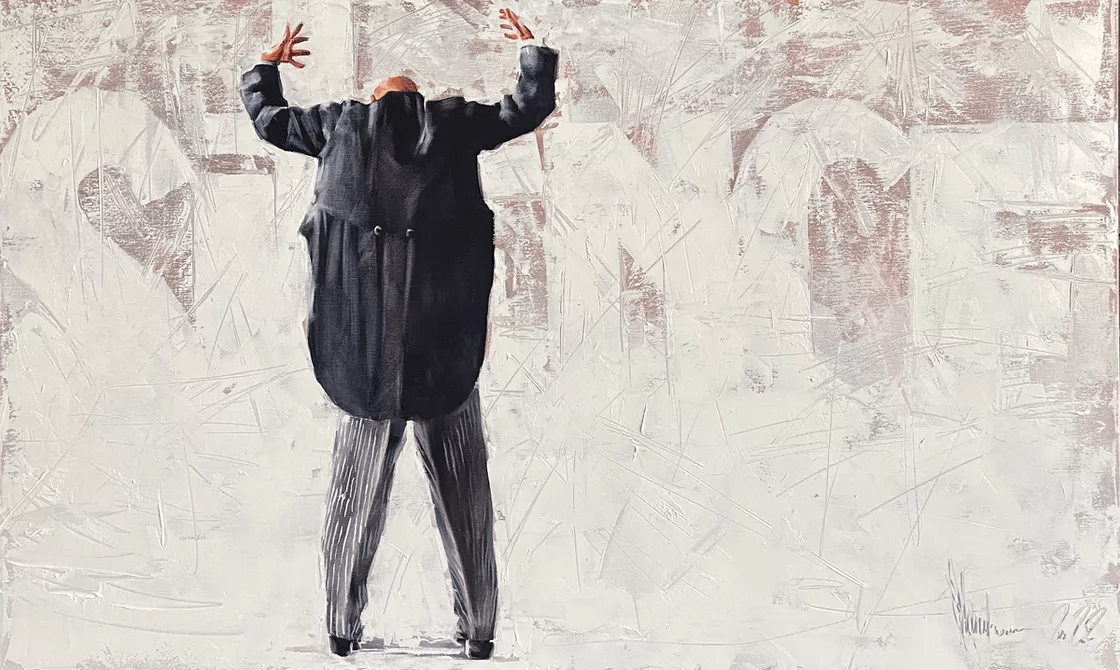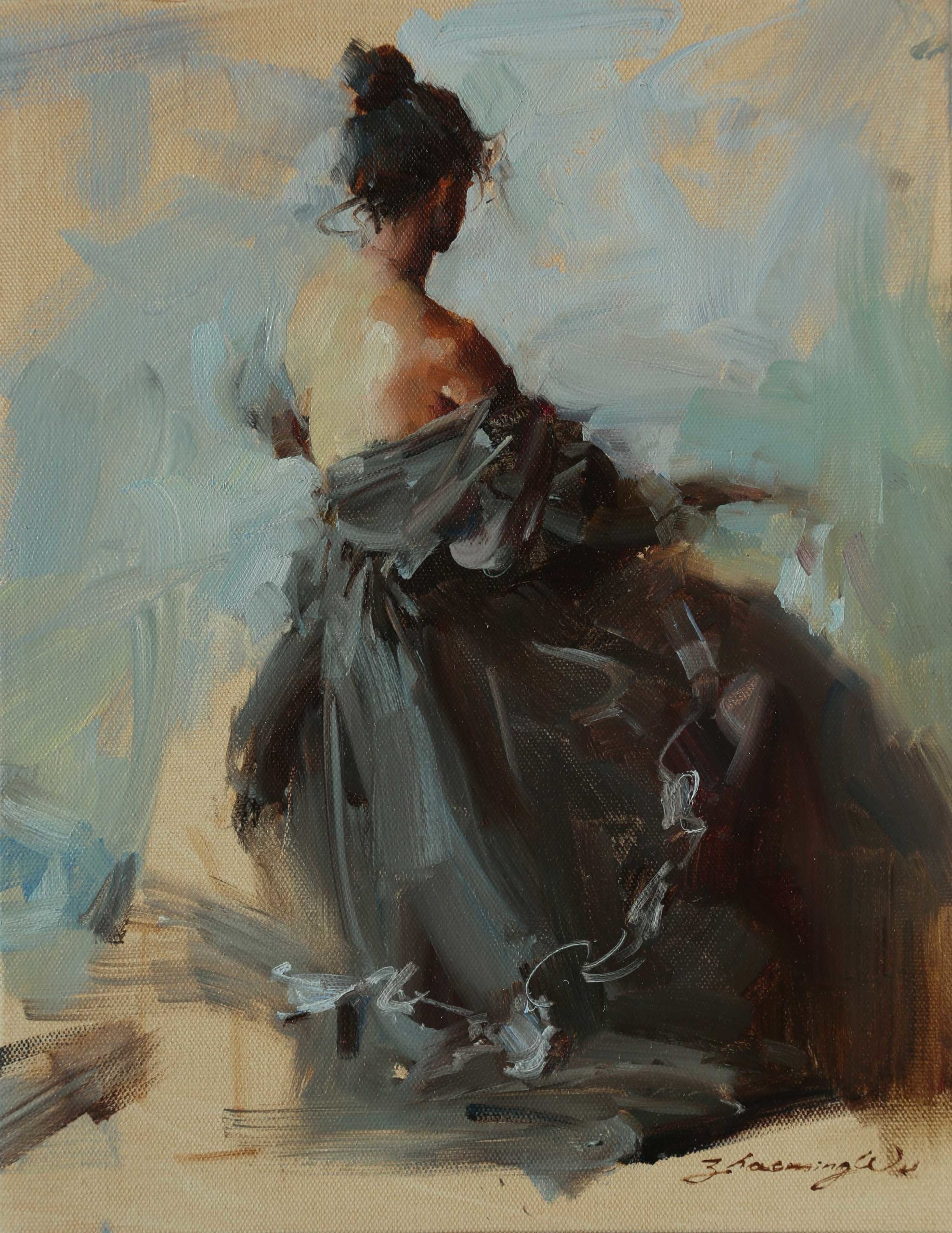The Advancement of Figurative Oil Painting: Recognizing Its Historic Relevance and Modern Interpretations
The advancement of figurative oil paint serves as a compelling lens with which to analyze the interaction between imaginative expression and historical context. Contemporary musicians, drawing from this rich heritage, are currently reinterpreting the human number in ways that test typical stories.
Beginnings of Metaphorical Oil Painting
The origins of figurative oil paint can be mapped back to the very early Renaissance in Europe, particularly in the 15th century. The development of oil paint enabled for better deepness of shade and information, enhancing the realism and vibrancy of their work.

In this transformative period, numbers were usually shown within contextually abundant atmospheres, showcasing not only their physical characteristics but also their emotional states. Leaders such as Jan van Eyck and Titian utilized the medium's versatility, using layering methods to accomplish luminosity and appearance. This technology assisted in the portrayal of intricate textiles and the subtleties of complexion, adding to the growth of portraiture and narrative scenes.
In Addition, the Renaissance focus on humanism fostered an appreciation for uniqueness, which consequently influenced musicians to produce more dynamic and relatable numbers - figurative oil painting. Consequently, figurative oil paint emerged as an effective automobile for storytelling and psychological engagement, preparing for future imaginative motions and designs
Trick Historical Activities
Considerable historic motions have formed the evolution of metaphorical oil paint, each contributing one-of-a-kind approaches and techniques that broadened the tool's opportunities. The Renaissance marked an essential moment, highlighting realistic look and the human form, with musicians like Leonardo da Vinci and Michelangelo pressing the boundaries of physiological precision and point of view. Following this, the Baroque period brought dramatic contrasts of light and shadow, exhibited by Caravaggio, that infused spiritual themes with extreme emotionality.
The 19th century introduced Romanticism and Realistic look, where artists such as Delacroix and Courbet challenged classical suitables, concentrating on individual expression and daily life. The advent of Impressionism additionally revolutionized the medium by stressing the impacts of light and color, resulting in a departure from traditional depiction.
In the early 20th century, activities like Expressionism and Cubism redefined metaphorical paint with abstraction and the expedition of psychological deepness. Each of these movements not only showed the societal modifications of their times yet additionally laid the groundwork for contemporary interpretations. The interplay between these historical motions has actually produced an abundant tapestry of ideologies and designs, affecting modern-day musicians in their search of recording the human experience on canvas.
Strategies and Products Advancement

Throughout the Baroque duration, techniques such as chiaroscuro and sfumato arised, enhancing the psychological resonance of metaphorical compositions. Musicians began to trying out glazes and impasto, adjusting structure and luminosity. By the 19th century, technologies like using pre-mixed paints in tubes revolutionized availability, allowing musicians to repaint en plein air and catch the short lived effects of light.
The 20th century observed the introduction of artificial pigments and tools, which broadened the scheme and altered the uniformity of oil paints. Moreover, the exploration of brand-new application strategies, such as combination knives and brushes of differing stiffness, additional varied artistic expression. Collectively, these improvements mirror the developing partnership in between materials, techniques, and the creative vision integral in metaphorical oil painting.

Contemporary Analyses
Contemporary analyses of metaphorical oil paint show a vibrant discussion between custom and advancement, where musicians test established norms and check out diverse themes. This evolution manifests in various ways, as contemporary musicians look at these guys mix timeless strategies with contemporary ideas, commonly attending to social, political, and personal narratives.
Many practitioners draw ideas from historic works, yet they infuse their pieces with modern viewpoints, using the human type as an automobile for commentary on gender, identification, and society. Artists progressively explore abstraction, distortion, and multimedias, which permits a more comprehensive analysis of the figure and its context.
Moreover, the usage of brilliant color schemes and unique structures frequently offers to interrupt conventional watching experiences, prompting crucial involvement from target markets. This shift in emphasis extends past aesthetic appeals; it reflects an expanding awareness of the intricacies of human experience in an interconnected world.
As metaphorical oil painting proceeds to evolve, it continues to be an important tool for exploring the subtleties of contemporary life, symbolizing both a important site respect for heritage and a commitment to dynamic thought. The outcome is a rich tapestry of expression that resonates with the intricacies of the modern human problem.
Effect On Modern Art
The influence of figurative oil painting on modern-day art is extensive, as it has constantly motivated a myriad of imaginative movements and methods throughout the 21st and 20th centuries. From Expressionism to Surrealism and past, the expedition of the human number has stayed a main style, permitting musicians to convey complex emotions and narratives. This focus on metaphorical depiction has actually led to a re-examination of conventional methods, leading to cutting-edge strategies that mix realistic look with abstraction.
Moreover, contemporary artists have embraced figurative oil painting as a way to deal with social and political problems, using the medium to challenge perceptions of society, sex, and identity. The revival of rate of interest in figurative operate in current years mirrors a hoping for link in a progressively digital world, where human experience and feeling are vital.
Additionally, the discussion in between metaphorical oil painting and view it now contemporary art appears in the jobs of artists such as Kehinde Wiley and Jenny Saville, that make use of historical recommendations while infusing their items with modern relevance. Inevitably, figurative oil painting remains to form and redefine modern-day creative expression, underscoring its enduring value in the art world.
Conclusion
The advancement of metaphorical oil painting emphasizes its historic significance and flexibility throughout various imaginative motions. From the naturalism of the Renaissance to the emotive expressions of the Baroque and the ingenious methods of modernity, this tool has continually changed. Contemporary interpretations mirror dynamic shades and unique compositions, cultivating important engagement with political and social themes. Inevitably, figurative oil paint continues to be a crucial tool for exploring the human experience, reverberating profoundly in today's electronic landscape.
The advancement of figurative oil painting offers as an engaging lens through which to analyze the interaction in between artistic expression and historical context.Considerable historic activities have shaped the development of metaphorical oil paint, each adding unique viewpoints and methods that broadened the tool's opportunities.As historic activities shaped the trajectory of figurative oil painting, the techniques and materials utilized by musicians have actually likewise undertaken substantial makeovers. figurative oil painting.The influence of metaphorical oil paint on contemporary art is profound, as it has continually inspired a myriad of artistic movements and practices throughout the 20th and 21st centuries.The evolution of figurative oil paint emphasizes its historic value and flexibility throughout different creative motions